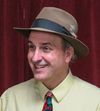Making 19th Avenue
The highway through San Francisco's Sunset District started as a rutted country road.
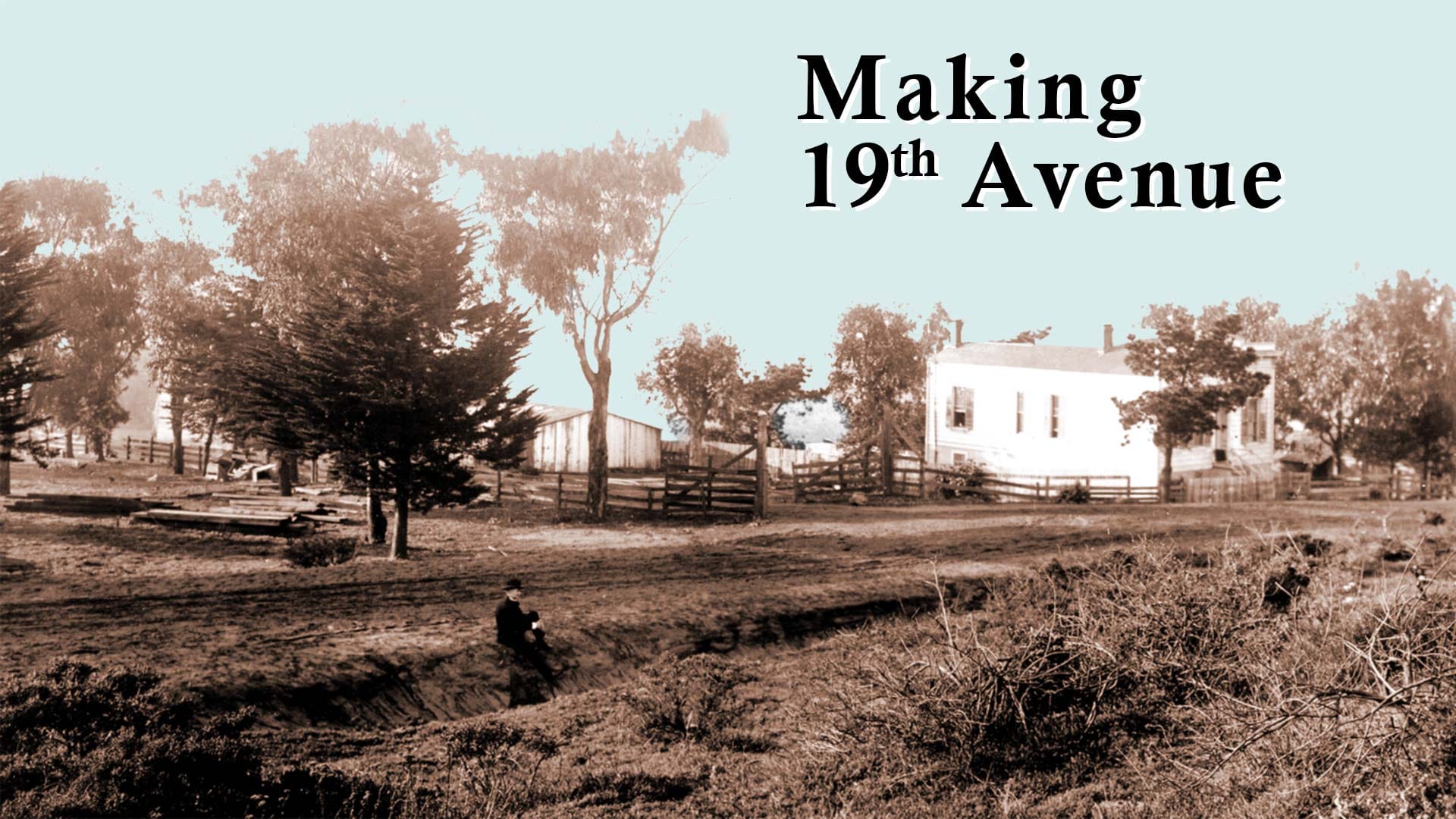
Happy Thanksgiving. If you want more San Francisco history and memories to read while Uncle Dan watches football or—eek—politics come up, I’ve made the Grab Bag posts, usually just for Friends of Woody, open to everyone through the end of the year. Enjoy!
(And maybe you should buy Uncle Dan his own Friend of Woody membership as a gift this holiday season.)
Both holiday travel and the rain have hit. Many of you in the city will creep along six-lane 19th Avenue through the Sunset District to get to Grandma’s. It’s often a slog: road construction that never ends, all the hybrids and shuttles going to South Bay tech jobs...
Your trip would be just as slow 125 years ago, but more bucolic:

Crazy, right? Hardy individuals made their homes in the dunes and scrub, but most shunned the outer Sunset District as a cold Sahara Desert.
That little pathway west of the ranch? It was an old toll “road” that diagonally connected the panhandle with Lake Merced.
Where’s 19th Avenue? It didn’t exist except on maps.
Paper Streets
All the numbered avenues of the Richmond and Sunset districts were on San Francisco maps from the late 1860s on, it’s just that most of them remained “paper streets” for the next 50, 60, and even 70 years. Some of the dunes weren’t covered by concrete and stucco homes until after World War II.
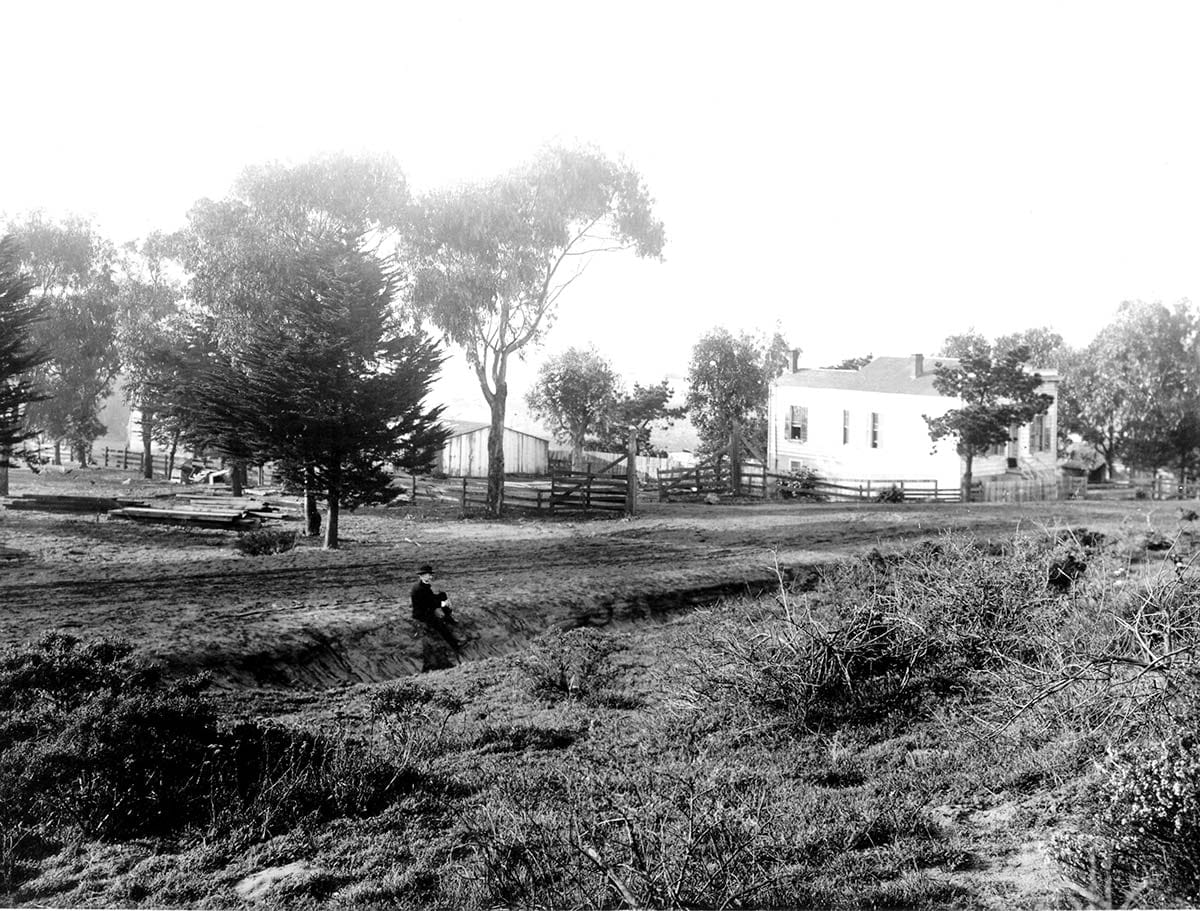
House building and infrastructure didn’t always go together. Some folks were fine buying a lot and creating their country estate with an outhouse and a windmill to suck up groundwater. Or making do with an old cable car at the beach.
But the big build-outs needed sewer lines and transit lines to get potential buyers to their jobs downtown. The Sunset did not have good transit connections.
A steam train ran along Lincoln Way starting in 1883, connecting today’s Haight-Ashbury with Ocean Beach. In 1898, it was electrified into a streetcar line, and real-estate hawkers did their best to convince folks to buy lots along Golden Gate Park. But no one wanted to commute home from work and then face a long, dark walk across drifting sand dunes.
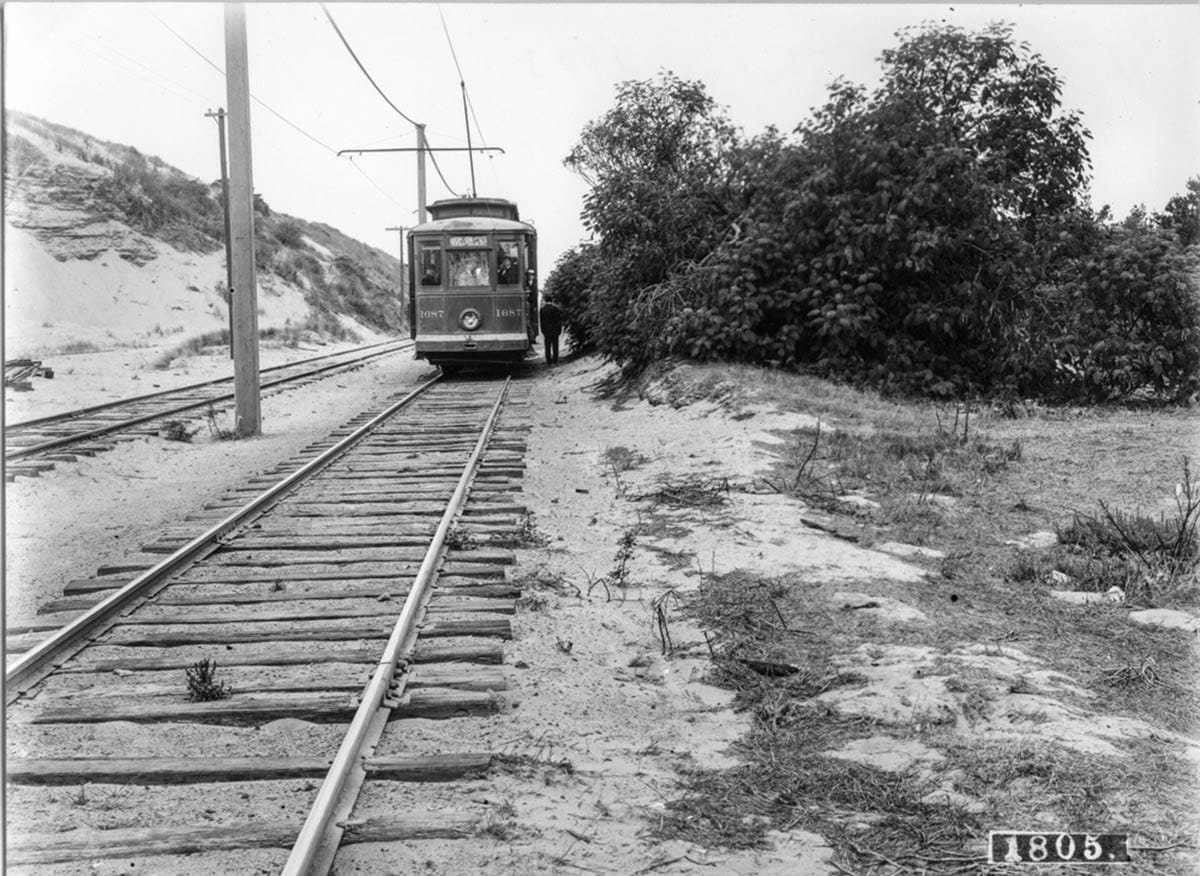
Of the Sunset District’s central roads, 19th Avenue was the first mostly clear of Golden Gate Heights western edges.
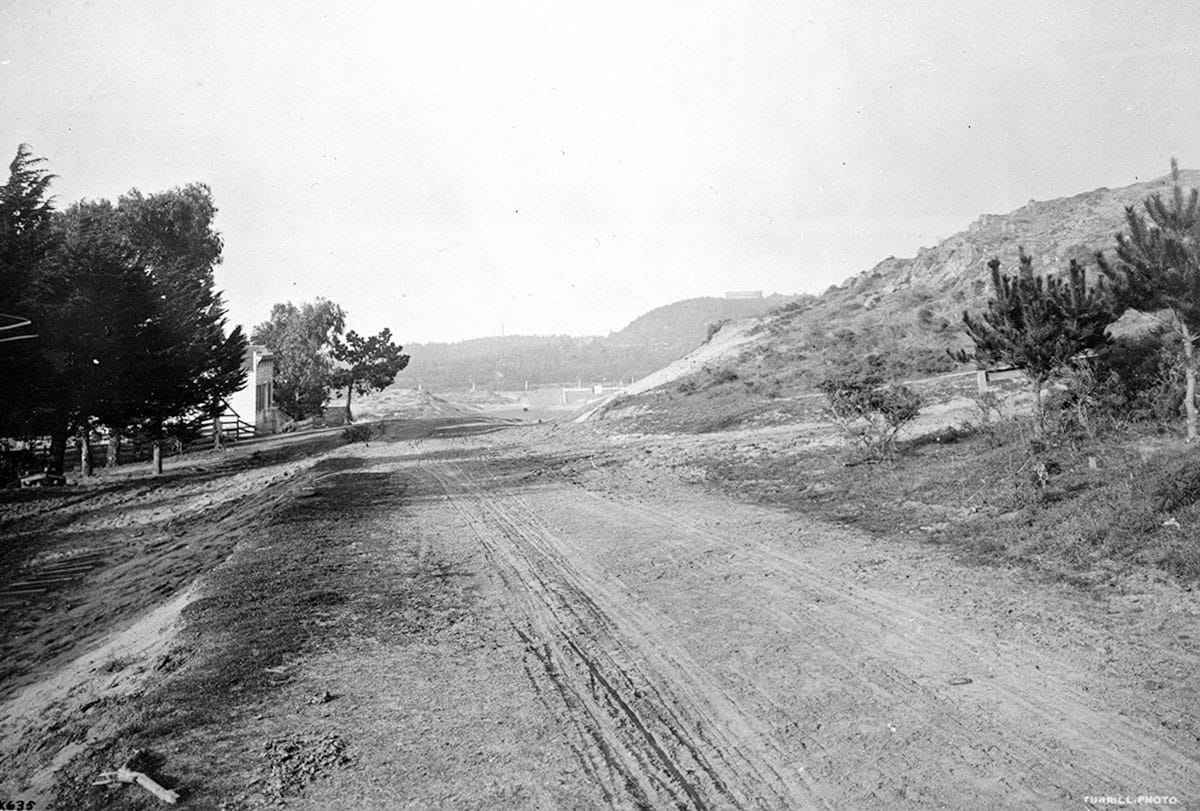
By 1903, it had made the most progress south from the park. Below is a section of the United States Coastal Survey from that year showing 19th had gotten roughly as far as Ortega Street, helping Carl Larsen get his chickens to market.

The USGS map above also shows building activity. Black dots and squares are structures. You don’t see many on those western avenues. Turning paper streets into real streets didn’t mean people started building.
Rapid Transit
In 1905, the Parkside Realty Company made a big play to build out a whole neighborhood just north of today’s Sigmund Stern Grove. The company incorporated its own streetcar car company to make the proposition remotely palatable to buyers.
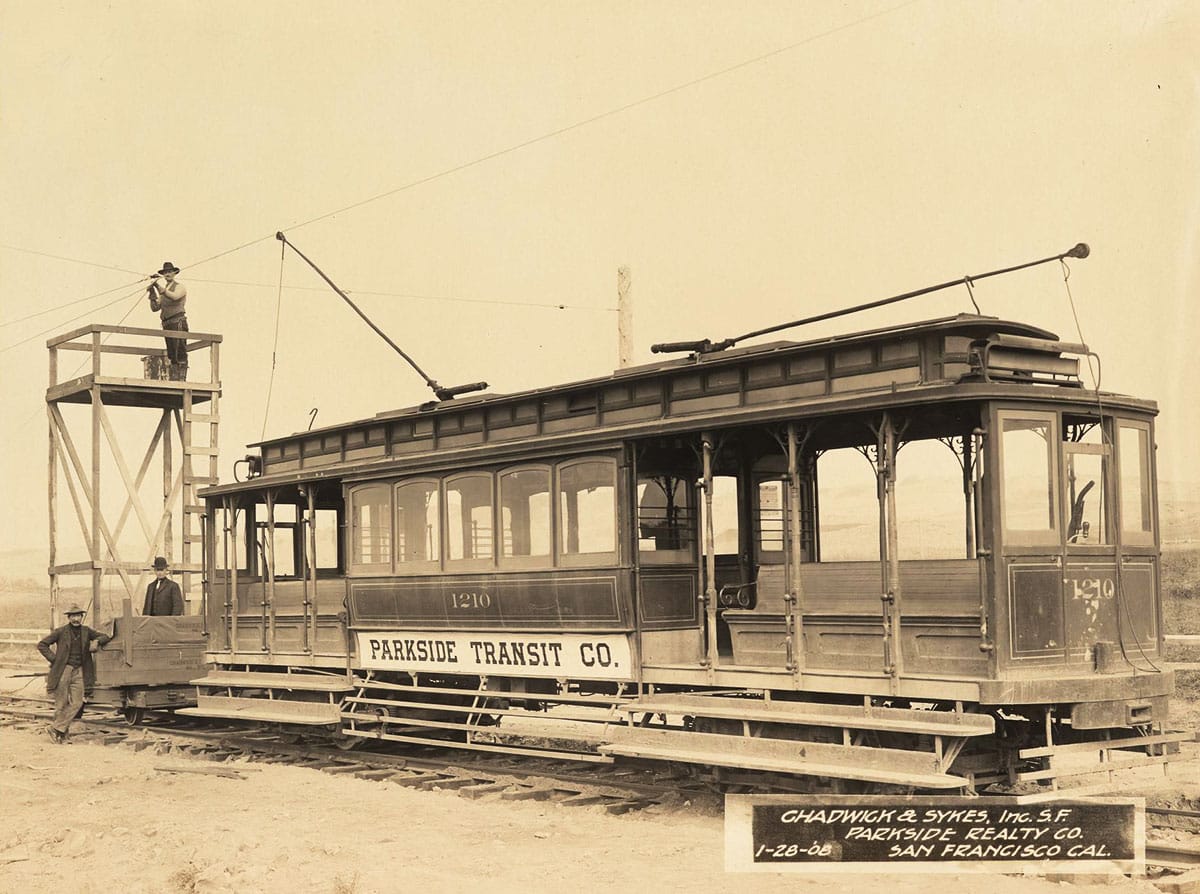
In 1908, the company began laying tracks from Lincoln Way south to the new Parkside District on… 20th Avenue.
It seems strange to us today, we who have 19th as the major thoroughfare and big dividing line of the neighborhood. But 20th Avenue was the franchise granted by the city and back in 1908 a rutted road wasn’t much better for building a streetcar line than a scrubby path a couple of hundred feet to the west.
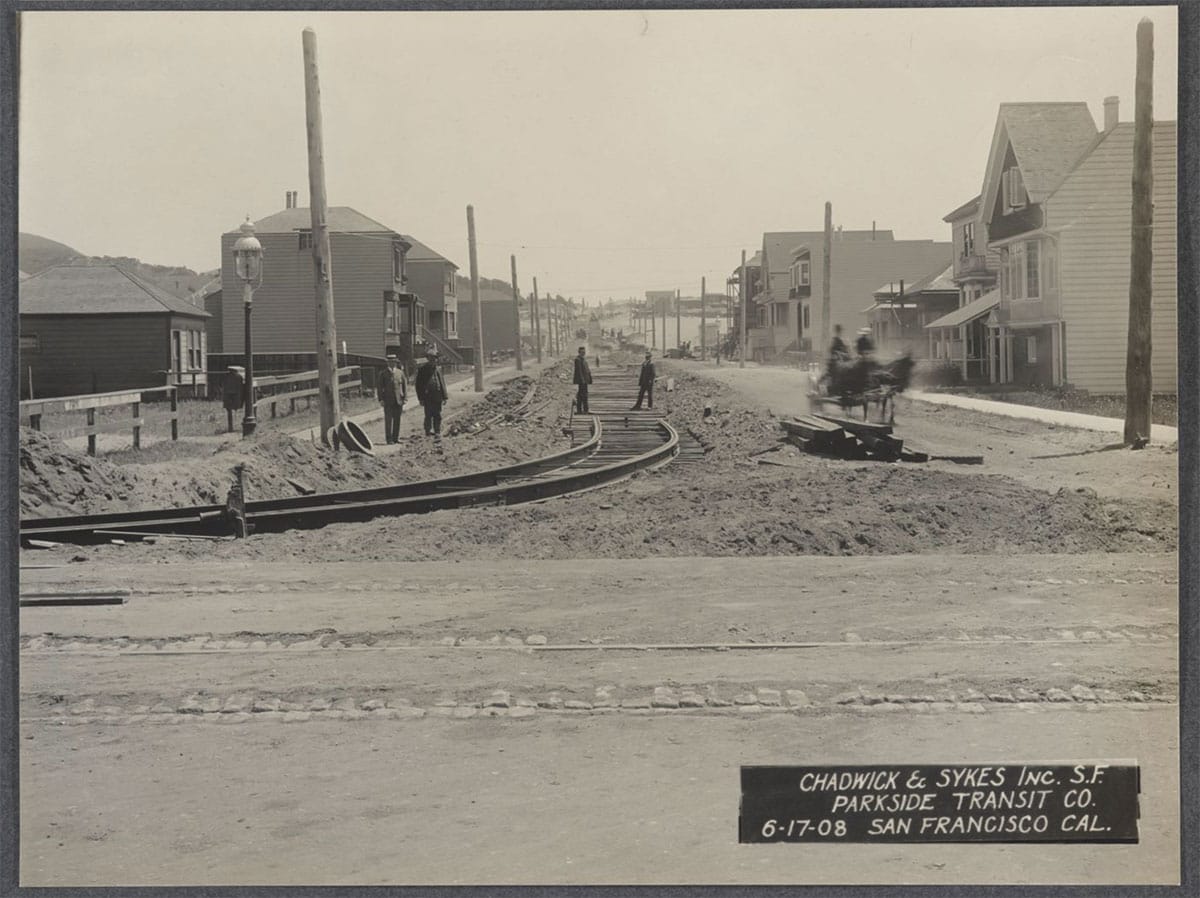
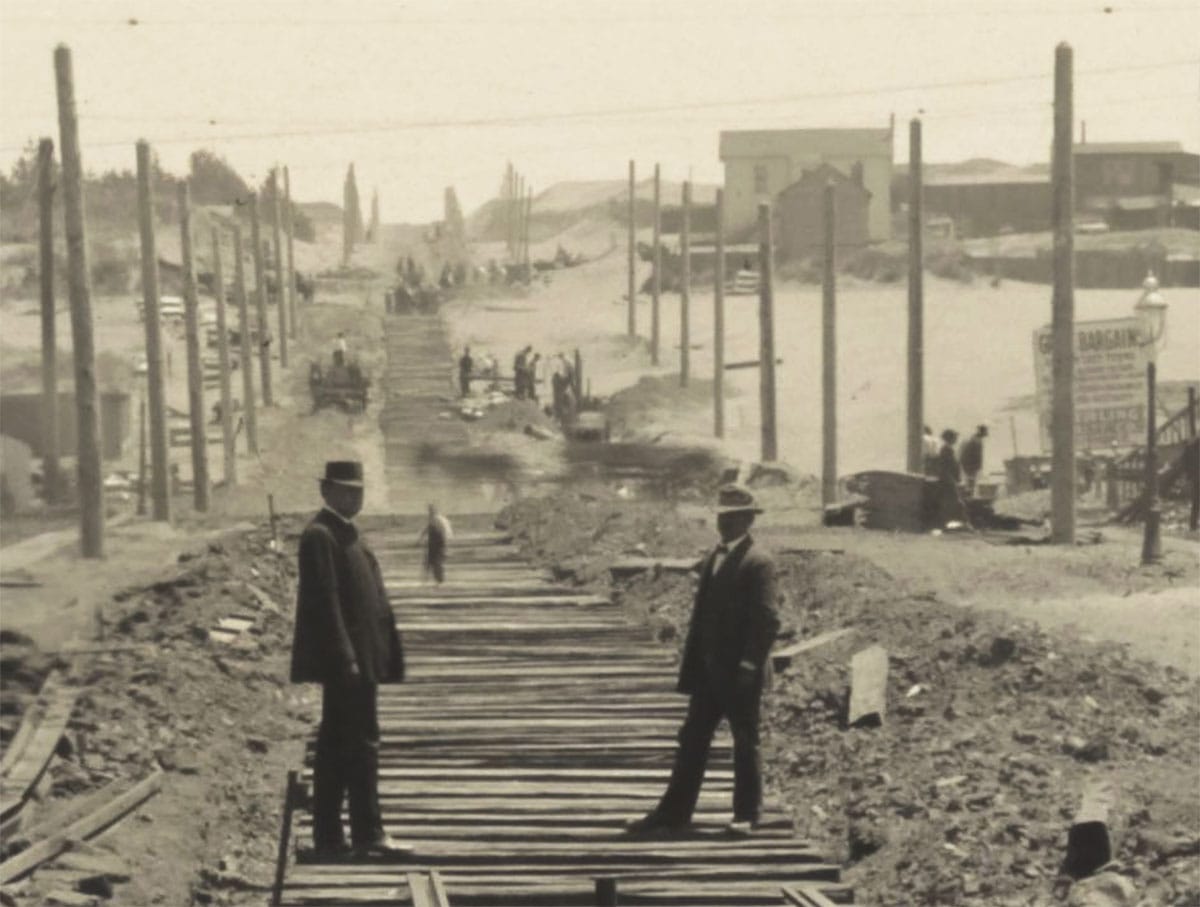
Besides, a group of enthusiasts infatuated with a new technology had begun to lobby the city to improve 19th Avenue specifically for their hobby.
Automobile Boulevard
I recently wrote about wealthy men who convinced the city to create a Golden Gate Park “speed road” for horses in the 1880s. A few years later this same demographic began splurging on a new toy: automobiles.
What good is spending way too much money on a contraption if there aren’t good roads to drive it on? In their early years, cars weren’t really commuting tools as much as Sunday-driving pleasure vehicles. Early ads for automobiles heavily emphasized driving to the great outdoors and seeing some nature.
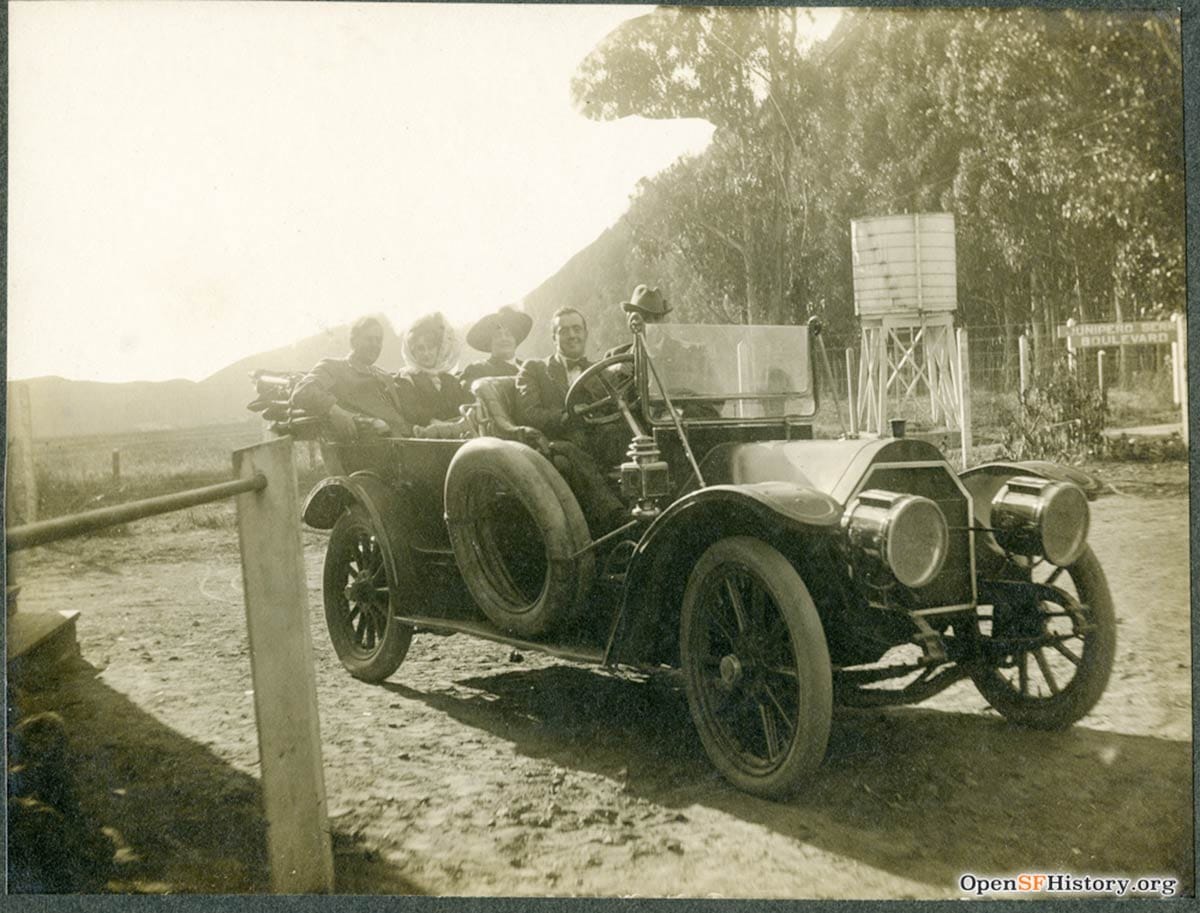
But the first owners of autos had to be tinkerers and amateur mechanics as much as drivers. Changing a flat tire was as certain on a Sunday drive as ants in the picnic basket.
Automobilists jumped onto the “good roads” campaigns previously waged by bicyclists. They pushed for creating a smooth circuit of avenues to get them out of town and back. Developers of suburban properties, seeing a future of commuting money men, were also onboard.
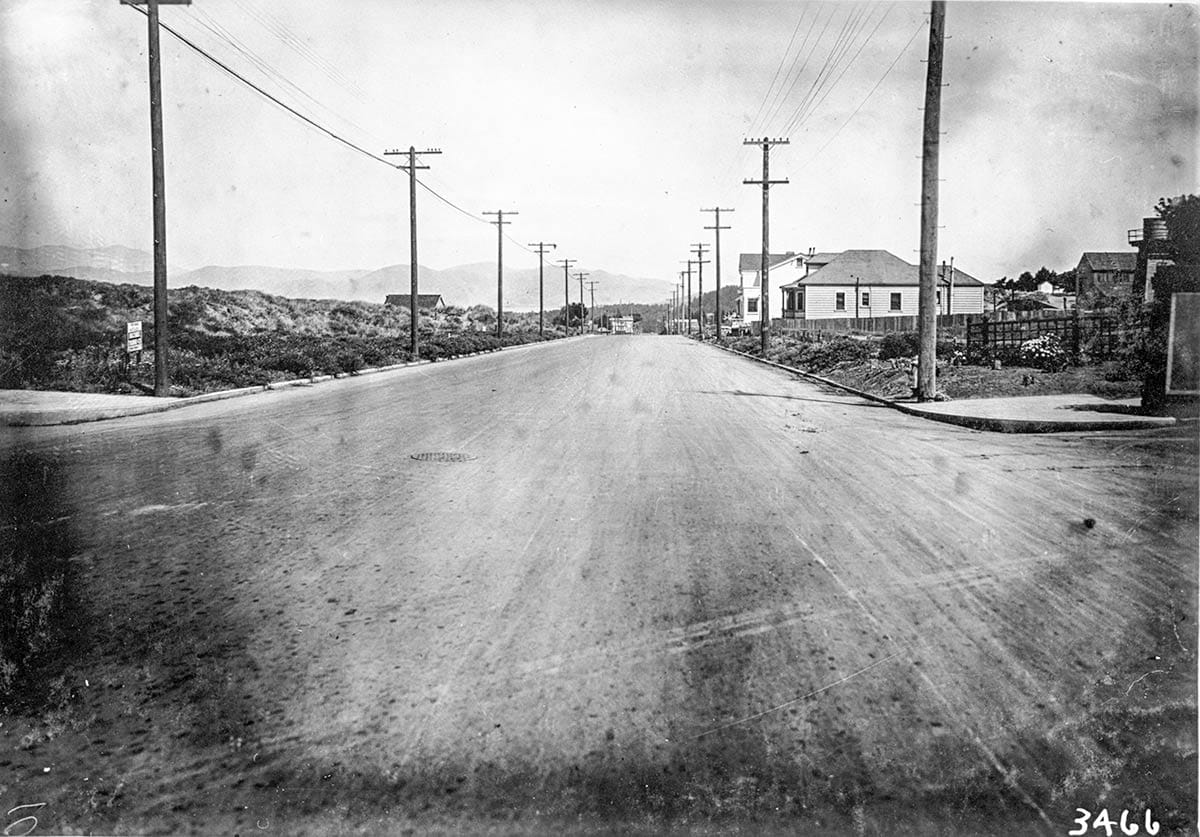
The first big project? A great road from Golden Gate Park to the county line.
As part of the plan, a beautiful paved extension of 19th Avenue was laid to what is today Sloat Boulevard. From there, a slight bop east around Spring Valley Water Company land got you on a wide new road to the county line.
The second section, paid for by the city with promises from auto enthusiasts to chip in, was initially named “Automobile Boulevard.” In mid 1908, it was given the name Junipero Serra Boulevard.
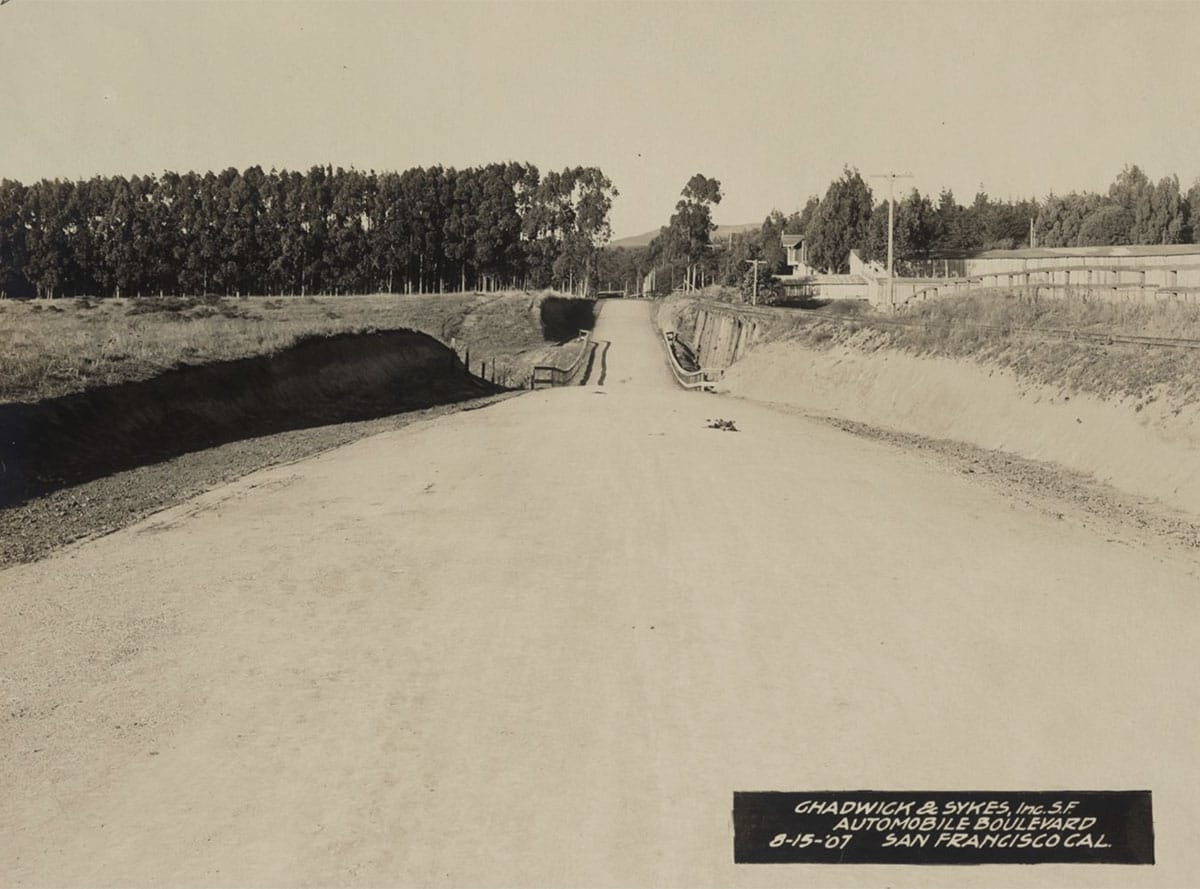
In 1929, the Spring Valley Water Company agreed to give the city a right of way through its Lake Merced lands to extend 19th Avenue and angle to an intersection with Junipero Serra Boulvard.
From there, the open road gave Sunday drivers the wonders of the peninsula.
Highway Robbery
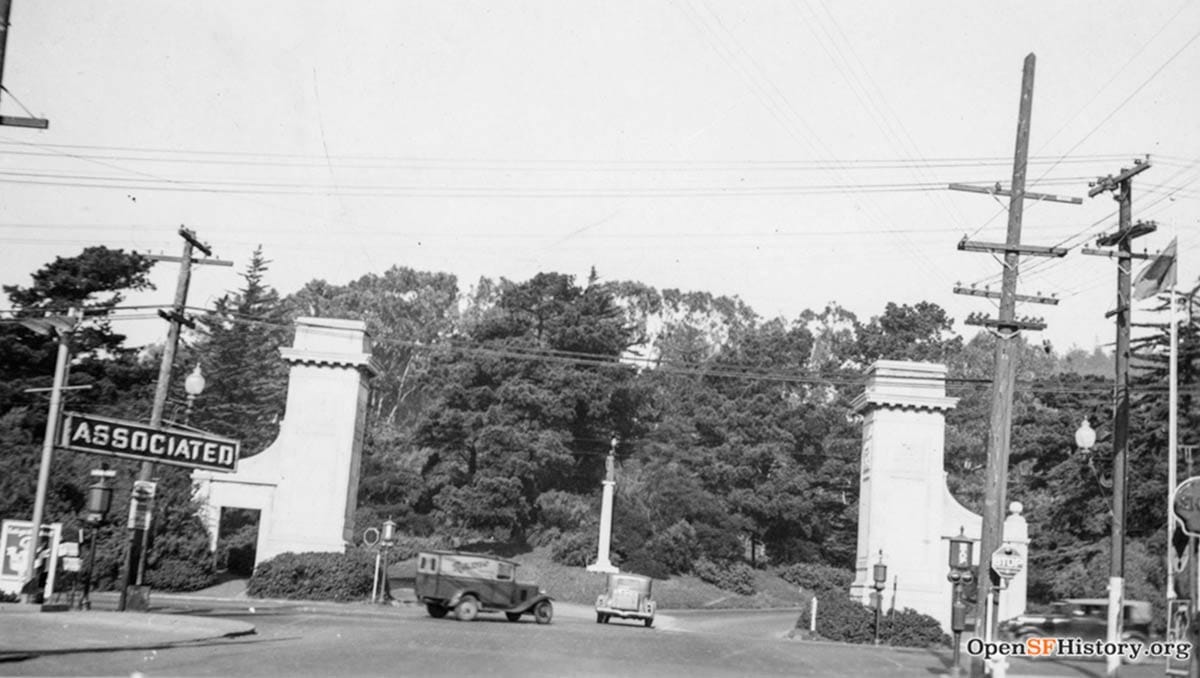
The early 20th century creation of 19th Avenue from Golden Gate Park to the county line does not explain why you are sitting in traffic with all those cars around you.
For that you can (partly) blame the Golden Gate Bridge.
No point in having a bridge unless you were going to connect state highways together. The most direct route south from the bridge was on the Richmond District’s landscaped Park-Presidio Boulevard, through Golden Gate Park (people were not happy about this, but “progress,” you know), and straight down 19th Avenue.
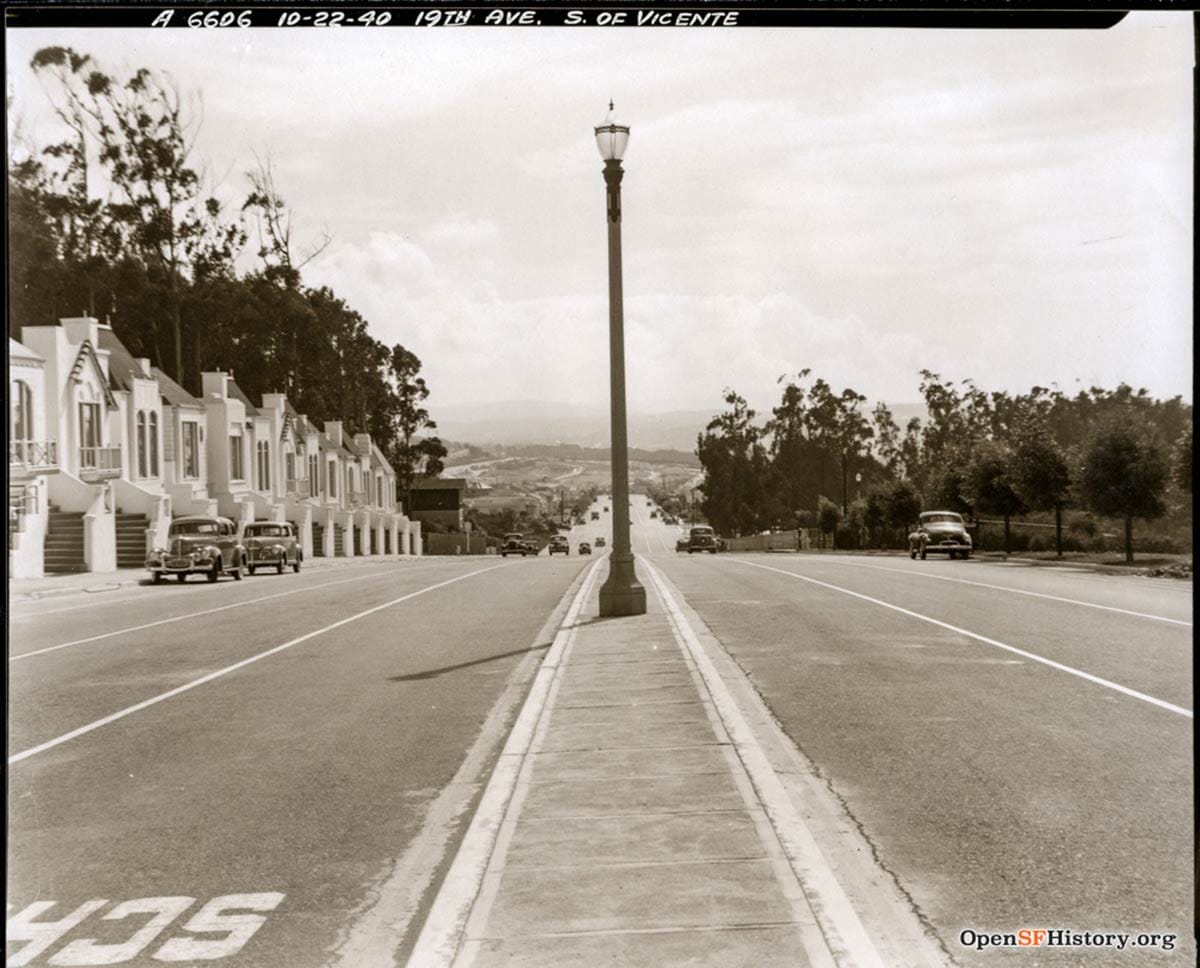
Sidewalks were squeezed, little jogs were made in the road to get around some bigger buildings, and the wide concrete river of State Highway 1 was in place by the late 1930s.
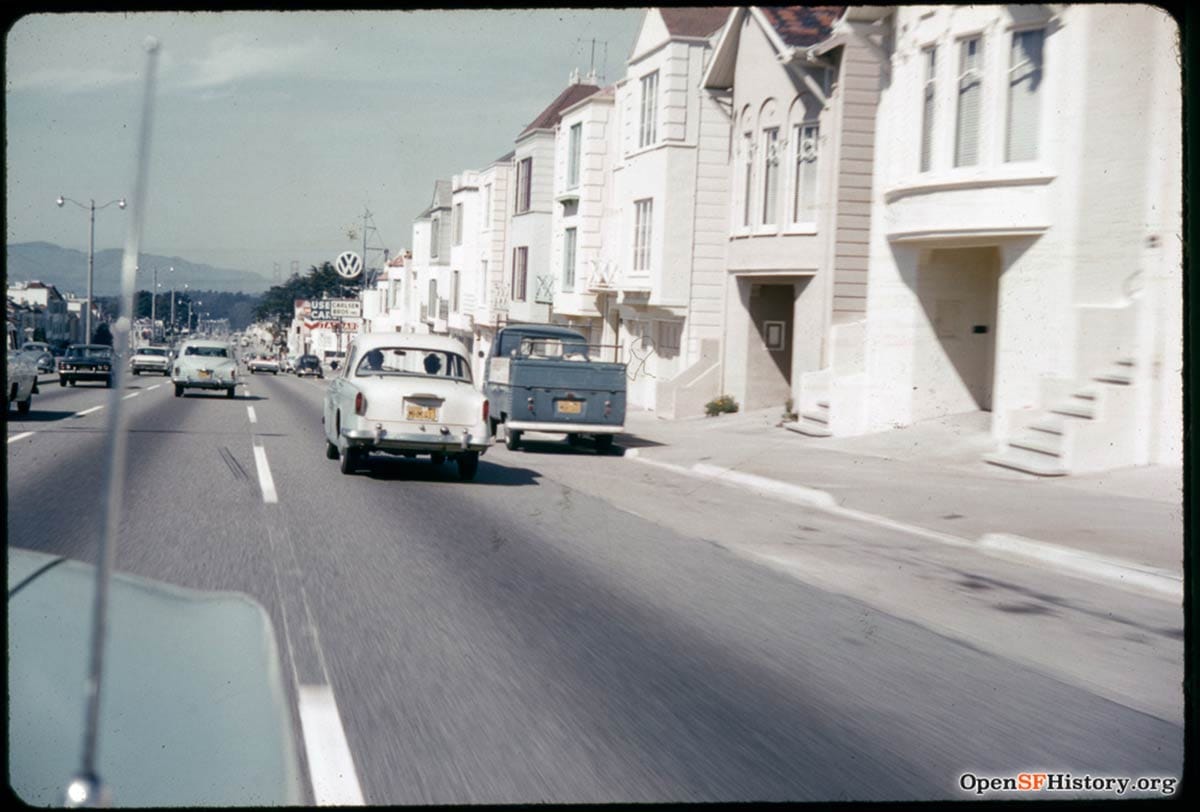
This takes me to one of the best stories from the neighborhood, collected by historian Lorri Ungaretti (F.O.W.)
Lorri interviewed a long-time Sunset resident who told her that in the 1930s she considered buying a house on 20th Avenue, but at the time the streetcar line was running and she believed it would be too busy and noisy. So she settled on a different house a block away.
A few years later, the state stole her front yard and dropped a highway out her front window.
Drive safe and happy Thanksgiving. 😄
Woody Beer and Coffee Fund
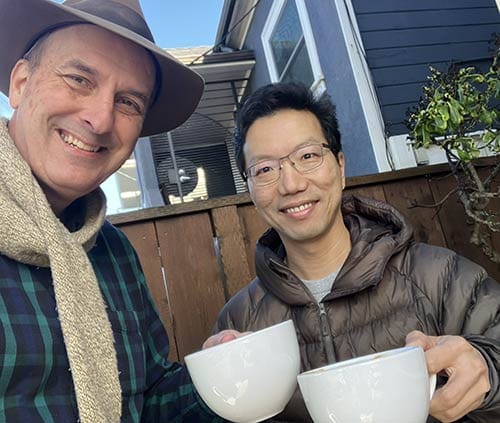
Thanks to all who contribute to one of the world's great causes: getting me out to buy a coffee and/or a beer for someone. Let me know when you are free!
Sources
“Automobile Boulevard,” San Francisco Chronicle, July 19, 1905, pg. 6.
“Give Name to New Auto Drive,” San Francisco Chronicle, July 10, 1908, pg. 5.
Me, The Parkside District, San Francisco Heritage site, July 1, 2020.

